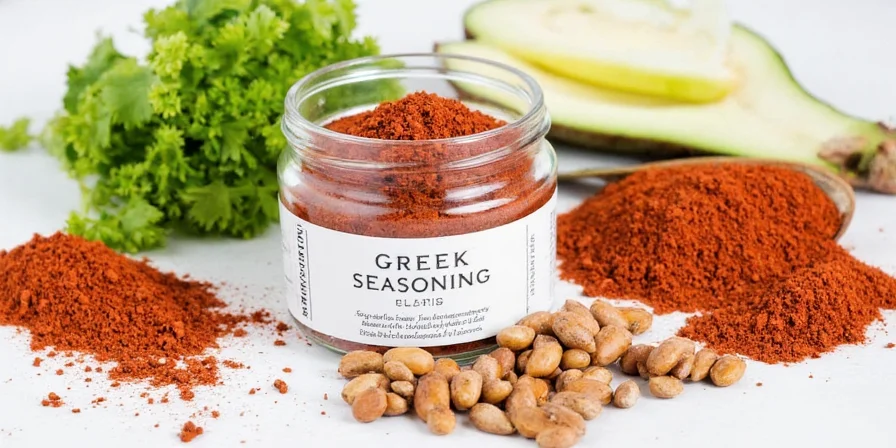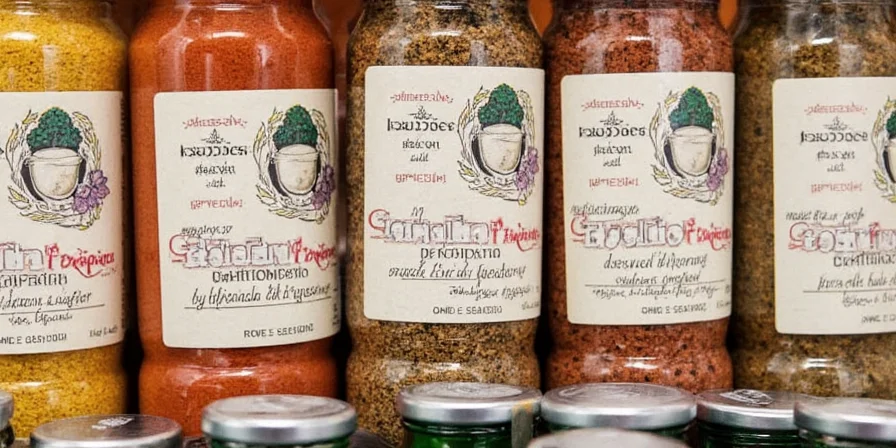What’s Greek Seasoning? A Flavor-Packed Journey Through the Mediterranean Pantry
If you’ve ever tasted a juicy souvlaki skewer, a warm slice of spanakopita, or even just a humble tomato salad drizzled with olive oil and sprinkled with herbs, you’ve had a brush with Greek seasoning. But what exactly is Greek seasoning? Is it a single spice? A blend? Or is it just… oregano with a fancy label?
In this blog post, we’ll unravel the mystery behind Greek seasoning, explore its flavor profile, break down its typical ingredients, and give you some pro tips on how to use it in your kitchen—whether you're a seasoned chef or a curious home cook.
Table of Contents
- What’s Greek Seasoning Anyway?
- Key Ingredients in Greek Seasoning Blends
- How to Use Greek Seasoning Like a Pro
- DIY: Make Your Own Greek Seasoning at Home
- Store-Bought Greek Seasoning Brands: Which One Should You Buy?
- Greek vs. Other Mediterranean Seasonings: What’s the Difference?
- Flavor Hacks: How to Elevate Dishes with Greek Seasoning
What’s Greek Seasoning Anyway?
The short answer: Greek seasoning is a spice blend inspired by traditional Greek and Mediterranean flavors. It typically combines dried herbs like oregano, thyme, and marjoram with spices such as garlic powder, onion powder, and sometimes lemon zest or basil. Some versions may also include salt, pepper, and other aromatics depending on the brand or recipe.
But here’s the twist—it’s not a standardized blend like Italian seasoning. No two Greek seasonings are exactly alike. Each family, region, or commercial brand might tweak the ratios to suit their taste.

Key Ingredients in Greek Seasoning Blends
While recipes can vary, most Greek seasonings include a mix of the following:
- Oregano: The star of the show. Greek oregano is earthy, slightly bitter, and incredibly fragrant.
- Thyme: Adds a woody, floral note that complements meats and roasted veggies.
- Marjoram: Milder and sweeter than oregano, often used in lighter dishes.
- Garlic Powder: For that classic garlicky kick found in many Greek dishes.
- Onion Powder: Balances out the herbal notes with umami depth.
- Basil (sometimes): Adds a touch of sweetness and freshness to the blend.
- Lemon Zest: Often included for brightness and tanginess without acidity.
- Parsley Flakes: Adds color and mild herbaceousness.
- Salt & Pepper: To round it all off (in pre-mixed versions).

| Spice | Taste Profile | Role in Blend |
|---|---|---|
| Oregano | Earthy, bold, slightly bitter | Main backbone |
| Thyme | Woody, floral | Supporting aroma |
| Marjoram | Mild, sweet, citrusy | Softens strong flavors |
| Garlic Powder | Strong, savory | Umami boost |
| Lemon Zest | Citrusy, bright | Brings freshness |
How to Use Greek Seasoning Like a Pro
You don’t need to be from Greece—or own a moussaka recipe—to put Greek seasoning to good use. Here are five easy ways to integrate it into your daily cooking:
- Season Grilled Meats: Sprinkle generously on chicken, lamb chops, or pork before grilling. Pair with lemon juice for an instant marinade.
- Rub for Roasted Veggies: Toss zucchini, eggplant, or potatoes with olive oil and Greek seasoning before roasting.
- Dip Enhancer: Stir a pinch into yogurt, sour cream, or hummus for a quick dip with personality.
- Pasta Perfection: Add to tomato sauces, creamy alfredo, or simply toss with olive oil, feta, and olives.
- Snack Attack: Mix into popcorn, sprinkle on roasted chickpeas, or blend into butter for flavored toast.

DIY: Make Your Own Greek Seasoning at Home
Why settle for store-bought when you can customize your own Greek seasoning blend at home? Here’s a simple 5-minute recipe to get you started:
Homemade Greek Seasoning Recipe
- 2 tbsp dried oregano
- 1 tbsp dried thyme
- 1 tbsp dried marjoram
- 1 tsp garlic powder
- 1 tsp onion powder
- 1 tsp lemon zest (dried preferred)
- Optional: ½ tsp black pepper, ½ tsp salt
Mix everything in a bowl until well combined. Store in an airtight container away from light and heat.

Store-Bought Greek Seasoning Brands: Which One Should You Buy?
If you’re short on time or prefer convenience, several popular brands offer quality Greek seasoning blends. Here’s a quick comparison to help you choose:
| Brand | Ingredients | Best For |
|---|---|---|
| McCormick Greek Seasoning | Oregano, thyme, marjoram, rosemary, garlic, onion, turmeric, lemon peel | Everyday use, budget-friendly |
| Badia Greek Seasoning | Oregano, marjoram, thyme, garlic, onion, paprika, chili pepper | Kids and milder palates |
| Olson’s Greek Seasoning | Organic oregano, thyme, marjoram, garlic, onion, lemon peel | Health-conscious cooks |
| Trader Joe’s Greek Island Seasoning | Oregano, thyme, marjoram, garlic, onion, sea salt | Fancy finishing touches |

Greek vs. Other Mediterranean Seasonings: What’s the Difference?
Greek seasoning often gets confused with other Mediterranean-style blends like Italian seasoning, za’atar, or herbes de Provence. So what sets them apart?
| Blend | Main Herbs/Spices | Signature Flavor |
|---|---|---|
| Greek Seasoning | Oregano, thyme, marjoram, garlic, lemon zest | Herb-forward, garlicky, bright |
| Italian Seasoning | Basil, oregano, thyme, rosemary, sage | More basil-forward, less garlicky |
| Za'atar | Thyme, sumac, sesame seeds, salt | Tangy, nutty, citrusy |
| Herbes de Provence | Lavender, thyme, rosemary, basil | Floral, delicate, French-inspired |
Flavor Hacks: How to Elevate Dishes with Greek Seasoning
- Add Fresh Lemon Juice: Greek seasoning shines brightest when paired with a squeeze of fresh lemon.
- Pair with Feta or Olives: Saltier cheeses and briny olives create a delicious contrast.
- Toast Before Using: Lightly dry-toasting the herbs releases more aroma and intensifies flavor.
- Use in Soups and Stews: Add a spoonful to lentil soup, chickpea stew, or minestrone for depth.
- Create Signature Dishes: Whip up a Greek-inspired dressing or seasoning base for wraps, salads, or sandwiches.

Conclusion
So, what’s Greek seasoning? It’s more than just a blend—it’s a ticket to the sun-soaked hills of the Mediterranean, bottled and ready for your pantry. Whether you buy it off the shelf or whip up your own, Greek seasoning is a versatile, flavorful tool that deserves a spot in every spice rack.
Now that you know the ins and outs of Greek seasoning, go ahead and experiment. Try it on roasted carrots, mix it into burgers, or add a pinch to your morning eggs. Once you start using it, you’ll wonder how you ever cooked without it.











 浙公网安备
33010002000092号
浙公网安备
33010002000092号 浙B2-20120091-4
浙B2-20120091-4